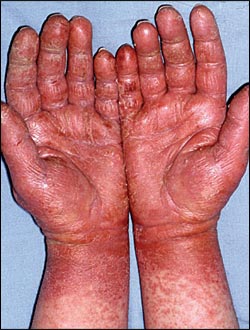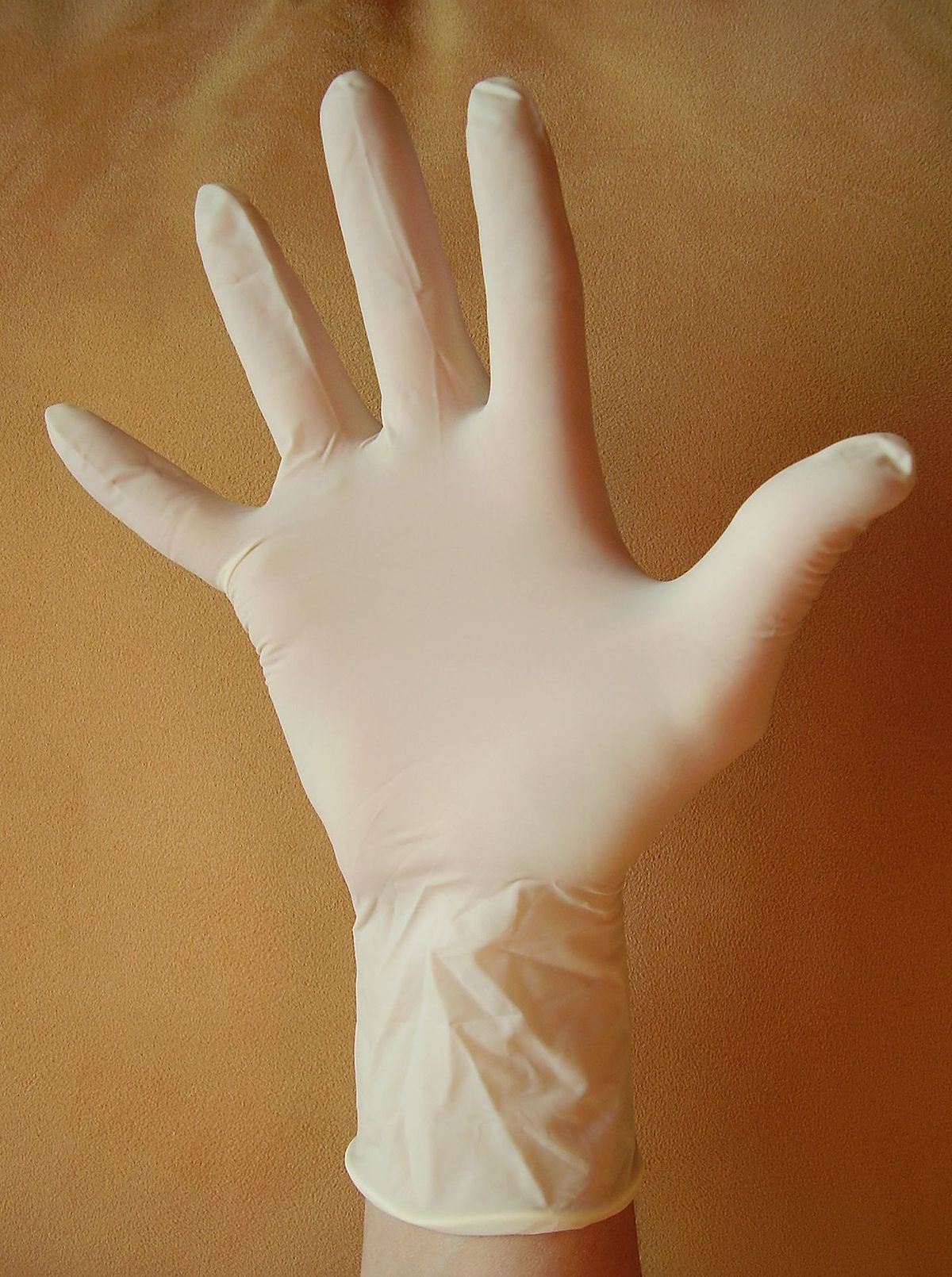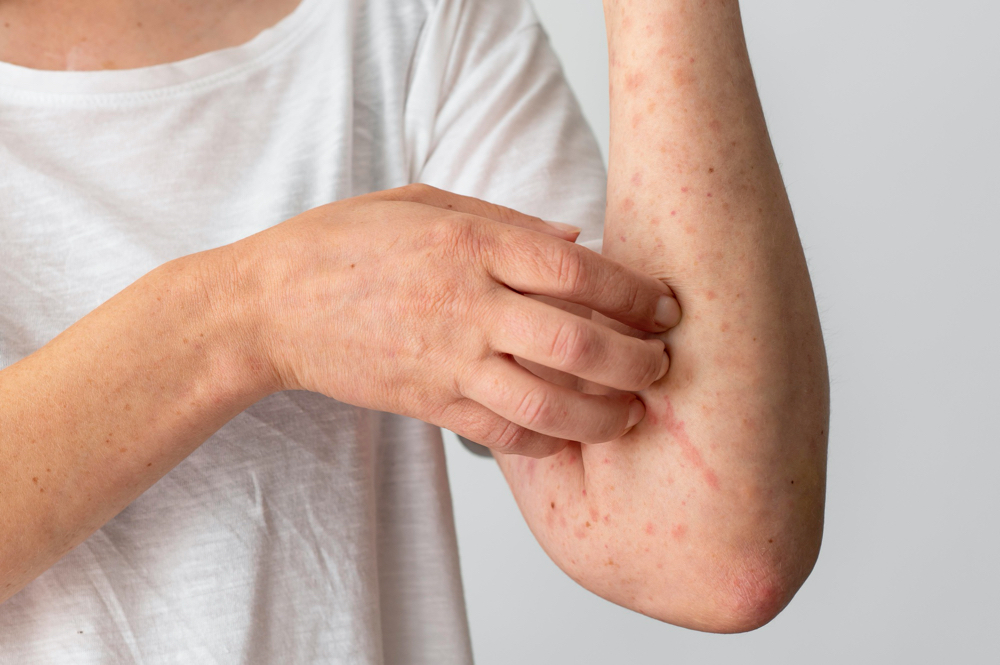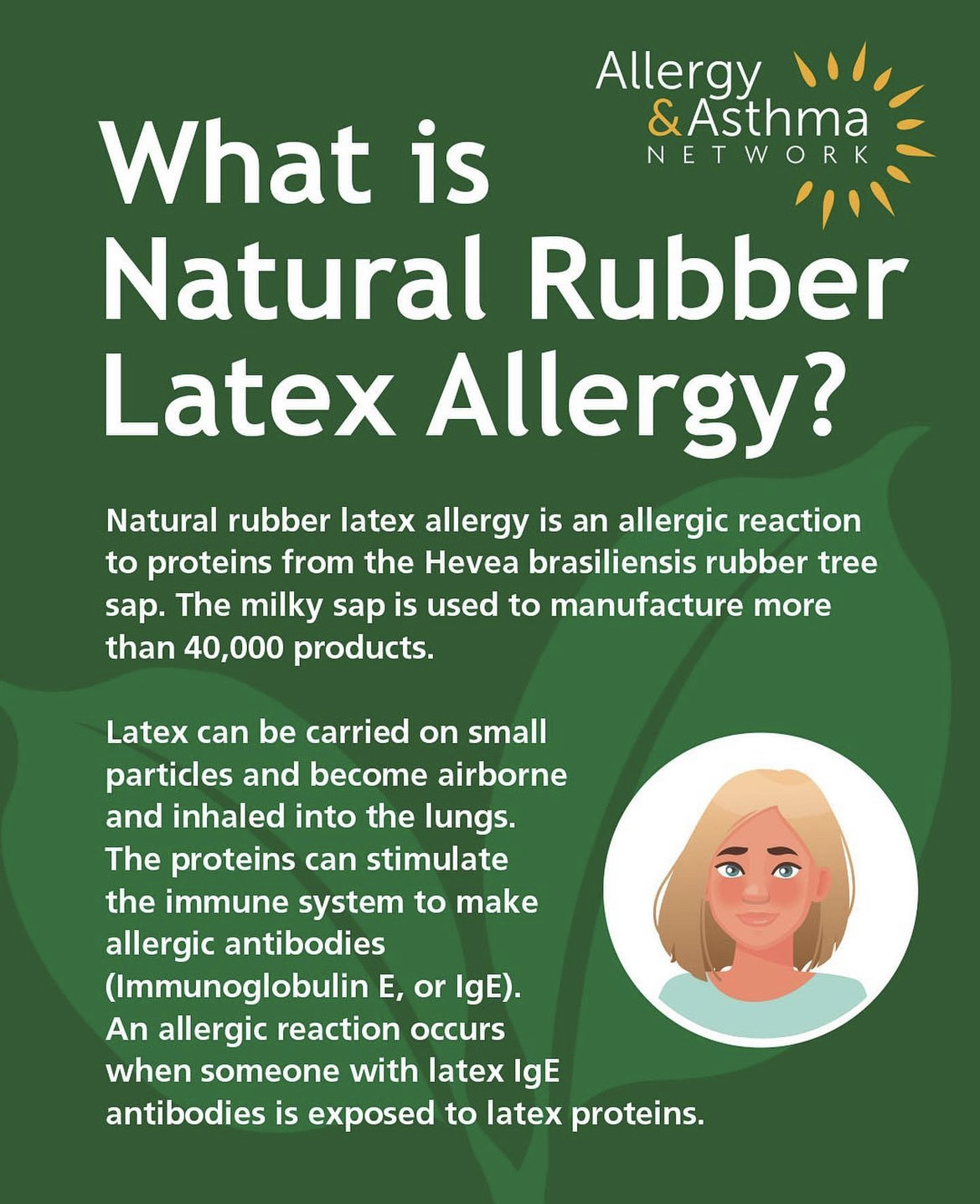By A Mystery Man Writer

The prevalence of latex allergy in the general population is low; however, the risk of developing latex allergy is higher in persons with increased latex exposure, such as health care workers or persons who work in the rubber industry. Children with spina bifida and others who undergo multiple surgeries or procedures, particularly within the first year of life, are also at greater risk of latex allergy. Reactions to latex allergy can range from type IV delayed hypersensitivity (e.g., contact dermatitis) to type I immediate hypersensitivity (e.g., urticaria, bronchospasm, anaphylaxis). Latex allergy can be diagnosed with clinical history, skin prick testing, latex-specific serum immunoglobulin E testing, and glove provocation testing. The main goals of latex allergy management are avoidance of exposure to latex allergens and appropriate treatment of allergic reactions. The use of nonlatex products from birth may prevent potentially serious allergic reactions. Widespread adoption of nonlatex or low-latex gloves has decreased the incidence of latex sensitization in health care workers.

Latex Sensitivity: Facts You Should Know About It

The Relationship Between Latex Allergies & Food - Hy-Tape International, Inc.

Latex Allergy

Latex allergy - Wikipedia

What is latex allergy and how can we prevent it? HSSE WORLD

Latex allergy Treatment in Novi MI

Can You Suddenly Develop a Latex Allergy? < Personalabs

Latex Allergy Sign, (SI-6964)

Allergy & Asthma Network on X: Day 2 of #LatexAllergyAwarenessWeek is all about understanding #LatexAllergy! Also known as natural rubber latex allergy, is an allergic reaction to the proteins present in the